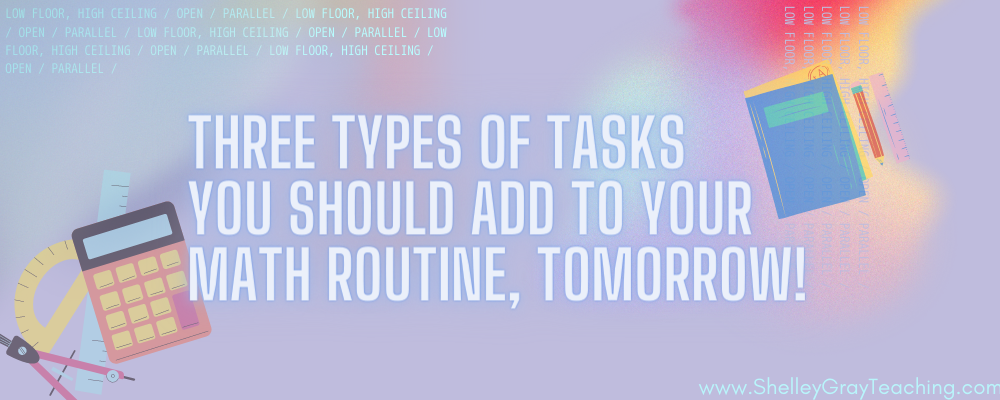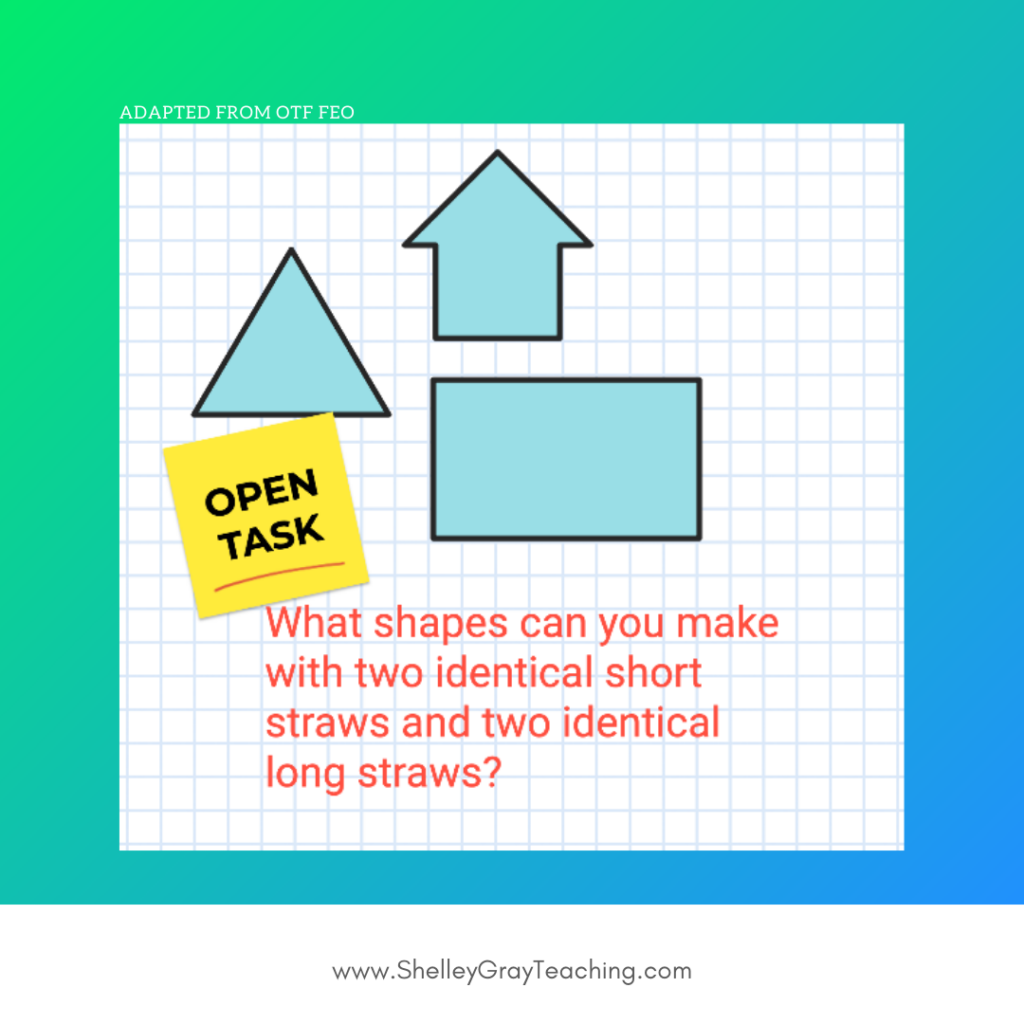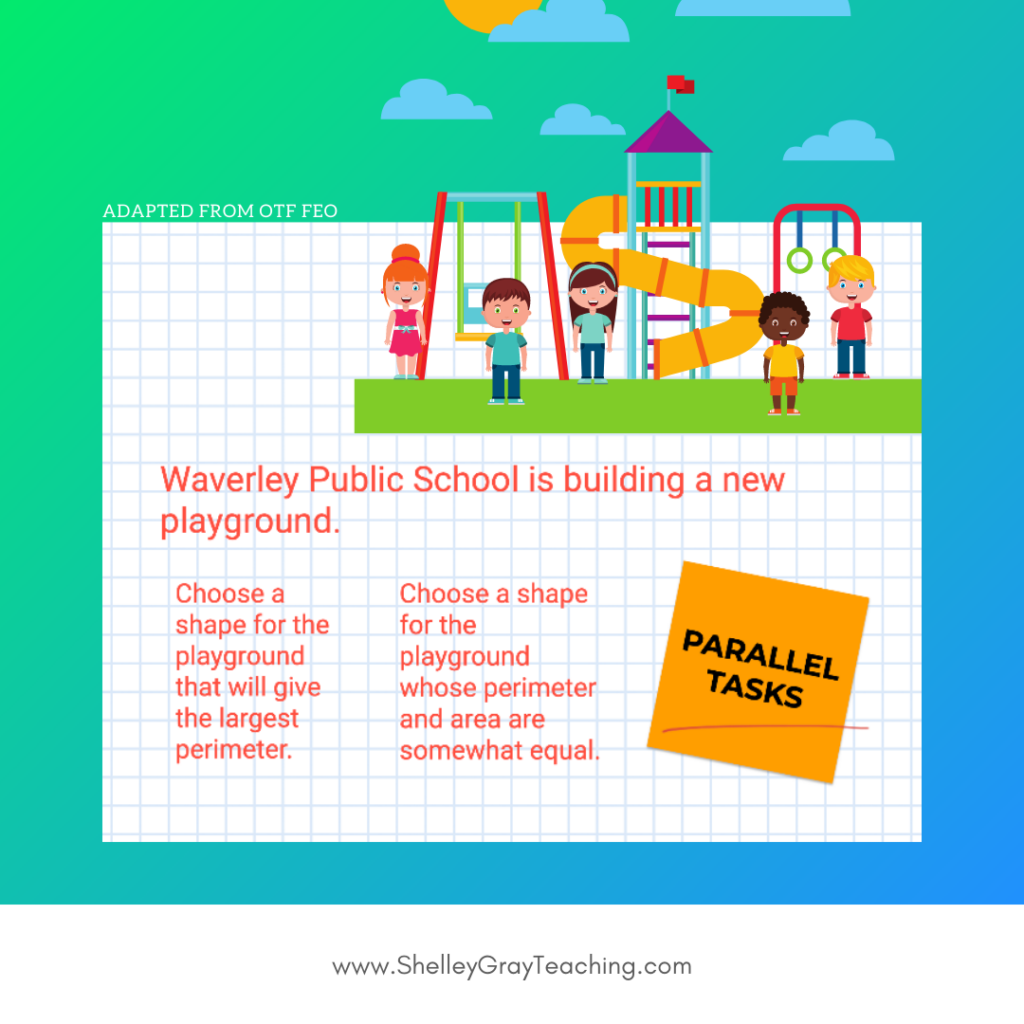
Why should you shake up your routine in the Math Lab? In a word: equity.
It is more important than ever to provide engaging tasks for learners that they can actually learn from, that meet them where they are at, and that are rich in mathematical content. It’s been two years since the first COVID-related school closure, and this has me reflecting on what adjustments I’ve made to balance out the ongoing disruptions to learning and ensure that everyone coming to class, virtual or not, has the opportunity to think deeply about Mathematics.
Even under “normal” circumstances, it can be hard to curate the right tasks for your learners day after day. Let’s get to some supportive math routine ideas you can use in your classroom, tomorrow! Shall we?
Math Routine Task Type #1: Low Floor, High Ceiling
If you’re like me, you want to promote the idea that ALL learners’ thinking is valuable while at the same time ensuring your emergent mathematicians don’t feel lost, and that your proficient mathematicians feel challenged. Is it really possible to do that when everyone is working on the same problem?
Yes, if your task is “low floor, high ceiling.”
In a previous article on the power of mathematical discourse, I wrote about these types of tasks as a way to level the mathematical playing field. Math education guru Jo Boaler describes them as having a low access point that everyone can creatively approach and discuss deeply, with a high ceiling that provides opportunities to enrich and challenge learners at higher and higher levels of understanding.
One of my favorite tasks from Boaler’s site (though it was adapted from an original task by Mark Driscoll) is called Paper Folding. It took me more than a year to find a solution to the fifth step! Ian Byrd writes that this is a telltale sign you’ve found a low floor, high ceiling task: there are solutions for learners to uncover that you’ve never even thought of!
Math Routine Task Type #2: Open Tasks
An open task is exactly how it sounds: the answer is not limited to one thing.
Open tasks allow for divergent thinking, instead of expecting all learners to arrive at the same answer. I first learned about this type of task from Marian Small who has an entire book series dedicated to them! She says that open tasks:
Demand thinking (not regurgitation)
Focus on big ideas in Math
Allows all learners to participate
Get learners talking about mathematical ideas
Open tasks can be as simple as giving students an answer and asking them to write the question.
Another way to open up a textbook or worksheet task that you already have would be to let the learners pick their own values. Small (2016) says, when you incorporate open tasks, “One question can meet the needs of many learners because the question is not overly tight and so benefits a broader range of students.”

Math Routine Task Type #3: Parallel Tasks
Last but not least, another great way to differentiate and reach more learners in your group is to use parallel tasks.
Here you need at least two variations of your task, both connected to the same big mathematical idea. This is important because if your tasks do not align with the same expectation or standard, then your learners can’t discuss their work with each other or make connections during a group discussion.
Present all variations to the learners, and let them choose which one to work on. In the same way that low floor, high ceiling and open tasks invite everyone to think and do math, giving learners parallel choices helps them more readily approach Math and again, see themselves as valuable contributors to their math community. Here we are back at one: equity.

Try One, Try Them All
In the wake of COVID-19 it seems inevitable that as educators we will see the most varied classrooms of our careers in the years to come. Of course, learners, parents, educators and administration have been doing their best to pivot from in-person to remote and back again but, the fact remains that recent learning has been inconsistent. Regardless of your classroom context, there is a lot of content out there so I have generated a short list below under Resources that should help you get started without having a lot of extra planning on your plate. All are designed to meet your learners where they are, whether they are struggling with the basics or reaching ahead for more.
Give one or all of these task types a try and let us know how it improves the quality of learning in your classroom!
Resources
For the readers:
Creating Low Threshold High Ceiling Classroom article – https://nrich.maths.org/7701
Aim for High Ceilings and Low Floors article – https://www.byrdseed.com/to-differentiate-lower-floors-and-raise-ceilings/
Numberless Word Problems – https://bstockus.wordpress.com/numberless-word-problems/
For the grab and goers:
Low Floor, High Ceiling Tasks:
Open and Parallel Tasks:







